This middle school lesson plan is designed to accompany the film “Juneteenth” and focuses on the themes of freedom and citizenship. Students will explore the events that led up to the issuance of General Order #3, while considering the relationship between freedom and citizenship, and why Juneteenth is significant for all Americans.
Juneteenth: The Work and Promise of Freedom
This middle school lesson plan is designed to accompany the film “Juneteenth” and focuses on the themes of freedom – personal, economic, social, and political freedom – and self-determination. Students will examine how African American people worked to win freedom, how some Americans tried to take that freedom away, and how citizens can protect freedom today. Students will also identify the promise of Juneteenth and consider if that promise has been achieved.
Battle for Emancipation and Full Citizenship: A Journey from Dred Scott to the 15th Amendment
This high school lesson plan is designed to accompany the film “Juneteenth” and encourages students to consider the connections between historical events before, during and after the Civil War that charted the course to citizenship for enslaved people in the United States. Students will also examine societal reactions to the emancipation of enslaved people and how the resulting conflicts necessitated the need for the three Reconstruction Amendments.
15th Amendment
The 15th Amendment prohibits using race as a factor to determine which citizens can vote.
14th Amendment
The 14th Amendment granted U.S. citizenship to former slaves and contained three new limits on state power: a state shall not violate a citizen’s privileges or immunities; shall not deprive any person of life, liberty, or property without due process of law; and must guarantee all persons equal protection of the laws.
Justice for All in the Courtroom
In this lesson, students analyze the interplay of processes and procedures that courts use to seat an impartial jury and gain appreciation for the essential role of juries in the justice system. They also explore the responsibilities and limits placed on government by the Constitution in the context of civil and criminal trials.
The Unfinished Business of Women’s Equality: Educators’ Guide
This guide for K-12 educators provides four types of activity suggestions and related resources for your upper elementary, middle or high school students: class starters; in-depth classroom activities; projects/performances for assessment; and culmination activities.
Jury Selection on Trial
In this lesson, students learn about the process used for jury selection and how the role and responsibilities of government in civil and criminal jury trials are viewed by the Supreme Court. They also reflect on the democratic values, principles, and dispositions of character working behind the scenes.
A Conversation on the Fourteenth Amendment
Three key components of the Fourteenth Amendment – due process, equal protection, and privileges and immunities – are explored in this lesson.
Equal Justice Under Law: Yick Wo v. Hopkins
This lesson teaches about the cause-and-effect relationships between historical events and the development of constitutional principles that protect the rights of all people in America today.
The Power of One Decision: Brown v. Board of Education
Through the lesson, students gain insight into decision-making at the Supreme Court, learn about the people behind the case, construct a persuasive argument, and evaluate the significance of Brown v. Board of Education.
Actions That Changed the Law: Ledbetter v. Goodyear
This lesson tells the law-changing story behind the Lilly Ledbetter Fair Pay Act of 2009. Students gain insight into law-making process and consider how statutory decisions made by the U.S. Supreme Court can prompt better laws.
A Conversation on the Constitution with Justice Anthony Kennedy: The Importance of the Yick Wo Case
Justice Kennedy discusses the ruling in Yick Wo v. Hopkins in which the U.S. Supreme Court decided that the unequal application of a law violated the 14th Amendment.
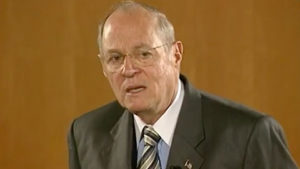
A Conversation on the Constitution with Justice Ruth Bader Ginsburg: The Fourteenth Amendment
Incorporating three integral constitutional tenets – due process, equal protection, and privileges and immunities – the 14th Amendment was originally intended to secure rights for former slaves, but over the years, it has been expanded to protect all people. Justice Ginsburg discusses with students its importance.
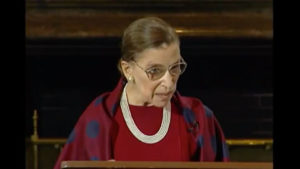
Korematsu and Civil Liberties
This documentary explores the landmark case Korematsu v. U.S. (1944) concerning the constitutionality of presidential executive order 9066 during World War II that gave the U.S. military the power to ban thousands of American citizens of Japanese ancestry from areas considered important to national security.
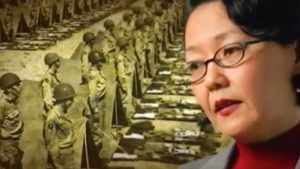
Jury Selection: Edmonson v. Leesville Concrete Company
This documentary tells how an African American construction worker’s personal-injury lawsuit against his employer evolved into a landmark jury selection case Edmonson v. Leesville Concrete Co. on the Sixth Amendment right to an impartial jury.
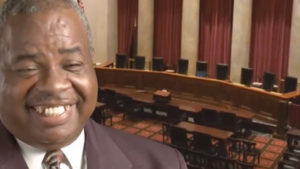
A Conversation on the Constitution with Justices Stephen Breyer, Anthony Kennedy and Sandra Day O’Connor: The Importance of the Japanese Internment Cases
After the attack on Pearl Harbor, the U.S. government sent people of Japanese ancestry to internment camps. The U.S. Supreme Court upheld the government’s right to restrict the liberty of these citizens and noncitizens in two cases: Korematsu v. U.S. and Hirabayashi v. U.S.
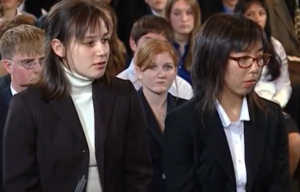
A Conversation on the Constitution with Justices Stephen Breyer, Anthony Kennedy and Sandra Day O’Connor: The Right to Trial by an Impartial Jury
Justices O’Connor, Breyer and Kennedy discuss the Sixth Amendment right to trial by an impartial jury in the context of Edmonson v. Leesville Concrete Co.
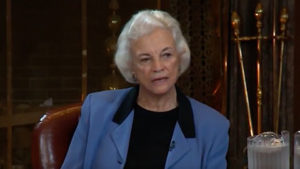
A Call to Act: Ledbetter v. Goodyear Tire and Rubber Co.
This documentary tells the story of Lilly Ledbetter and her U.S. Supreme Court case Ledbetter v. Goodyear Tire and Rubber Co.. Ledbetter’s fight for equal pay for equal work eventually involved all three branches of government and resulted in the Lilly Ledbetter Fair Pay Act of 2009.
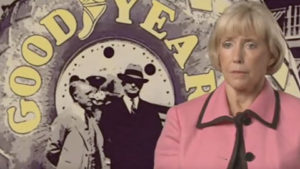
A Conversation on the Constitution with Justice Stephen Breyer: Ledbetter v. Goodyear Tire and Rubber Co.
Justice Breyer and a group of high school students discuss separation of powers in connection with pay discrimination case Ledbetter v. Goodyear Tire and Rubber Co. that resulted in a 2009 law called the Lilly Ledbetter Fair Pay Act.
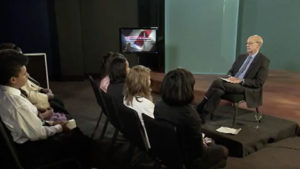
Chapter 10: The Right to Freedom from Racial Discrimination
Slavery is the ultimate form of discrimination, and racial slavery had been part of the American landscape since the mid-seventeenth century. By the time of the Revolution, holding human beings as property was allowed in all thirteen states.
A Conversation on the Constitution with Justices Stephen Breyer, Anthony Kennedy and Sandra Day O’Connor: Brown v. Board of Education
Supreme Court Justices Stephen G. Breyer, Sandra Day O’Connor and Anthony M. Kennedy discuss with high school students the landmark case Brown v. Board of Education that ended racial segregation in schools.
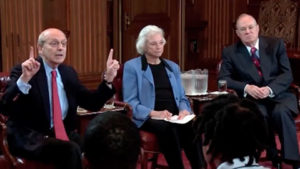
Yick Wo and the Equal Protection Clause
This documentary examines the case Yick Wo v. Hopkins (1886) in which the Supreme Court held that noncitizens have due process rights under the 14th Amendment’s equal protection clause. The Court said that unequal application of a law violated the rights of a Chinese immigrant.
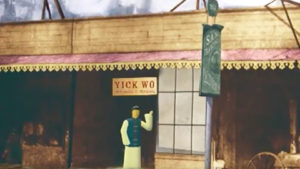
Thurgood
“Thurgood” is a production of the critically acclaimed play starring Laurence Fishburne as the nation’s first African-American Supreme Court justice.
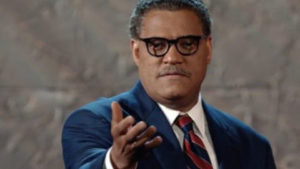
Chapter 3: The Right to Equal Protection of the Laws
“All men are created equal.” This phrase has stirred hearts around the world for more than 200 years. It is one of the values most associated with the United States, but nowhere is the language of equality among individuals found in the Constitution.
